Devouring the church
Setting your teeth in the church was not as implausible an act in medieval times as we might think today. Different creatures nibbled and scraped away at the church’s fabric: sculpted monsters, pillar-biting hypocrites, and even the faithful themselves.
Monsters and hypocrites biting columns
In Romanesque capital sculpture, especially in France and Spain and to some extent in England, one can quite often see monstrous heads gnawing away at the church of which they form an intrinsic part. With their broad jaws that display a prominent set of pointy teeth, they swallow the entire upper part of the column or colonette that they surmount. Examples occur in places like Saint-Hilaire-la-Croix (Puy-de-Dôme), Chadenac (Charente-Maritime), Civray (Vienne) and Cunault (Maine-et-Loire). It is clear that these actions bring to mind the constant threat of evil and that the act in itself subverts the stability of the church building, which is a representation of the ‘ecclesia’, the community of the faithful.
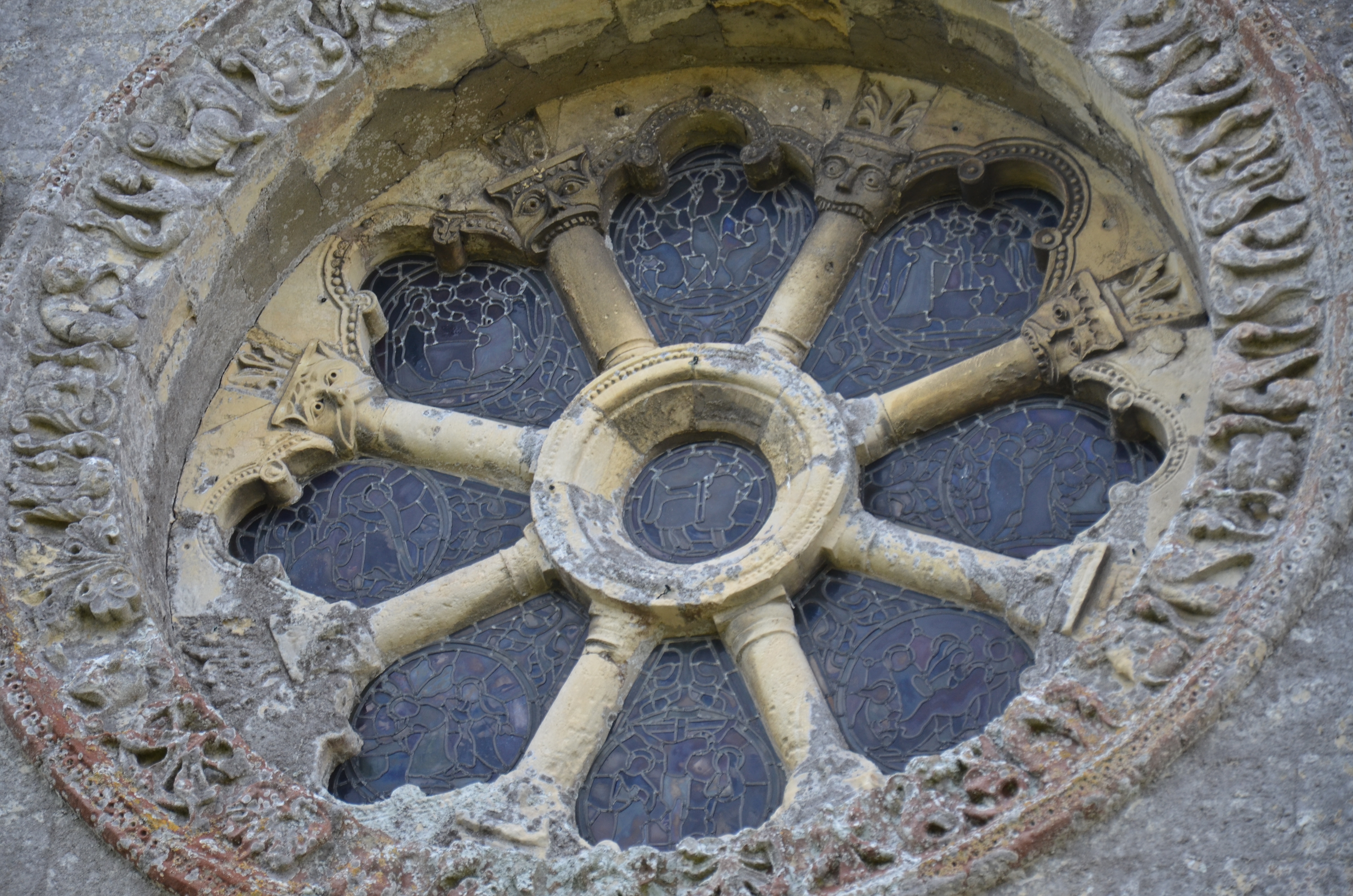
In later Gothic art, quite a different species of church eaters emerges, as on the far ends of the lower part of the choir screen of the St Bavo Church in Haarlem, made between 1509 and 1517. Here we encounter two curious figures carved in wood, grasping at the column that is part of the framework surrounding them and, with great gusto, literally sink their teeth into it, a gesture that distorts their faces and makes them look ugly to the extreme. The far left features a fashionable lady, wearing a long dress and a turban as well as overshoes. On the right, we see a man in breeches and a short tunic, a mantled hood and again overshoes. Both figures prominently display a rosary hanging from their belts. The Dutch word for this type of person is ‘pilaar bijter’ (pillar-biter) and there are various proverbs that warn against the species. Pillar-biters symbolize excessive piety as well as hypocrisy. This could be explained in various ways. While pretending to be virtuous, pillar-biters forsake their charitable duties, or, while appearing devout to the utmost in church, their demeanour at home is quite different. As a Southern Netherlandish proverb has it: “who is a pillar-biter in church, shits devils in his own house’.
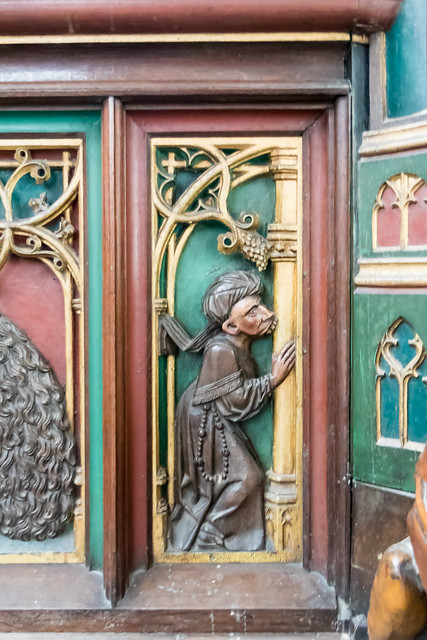
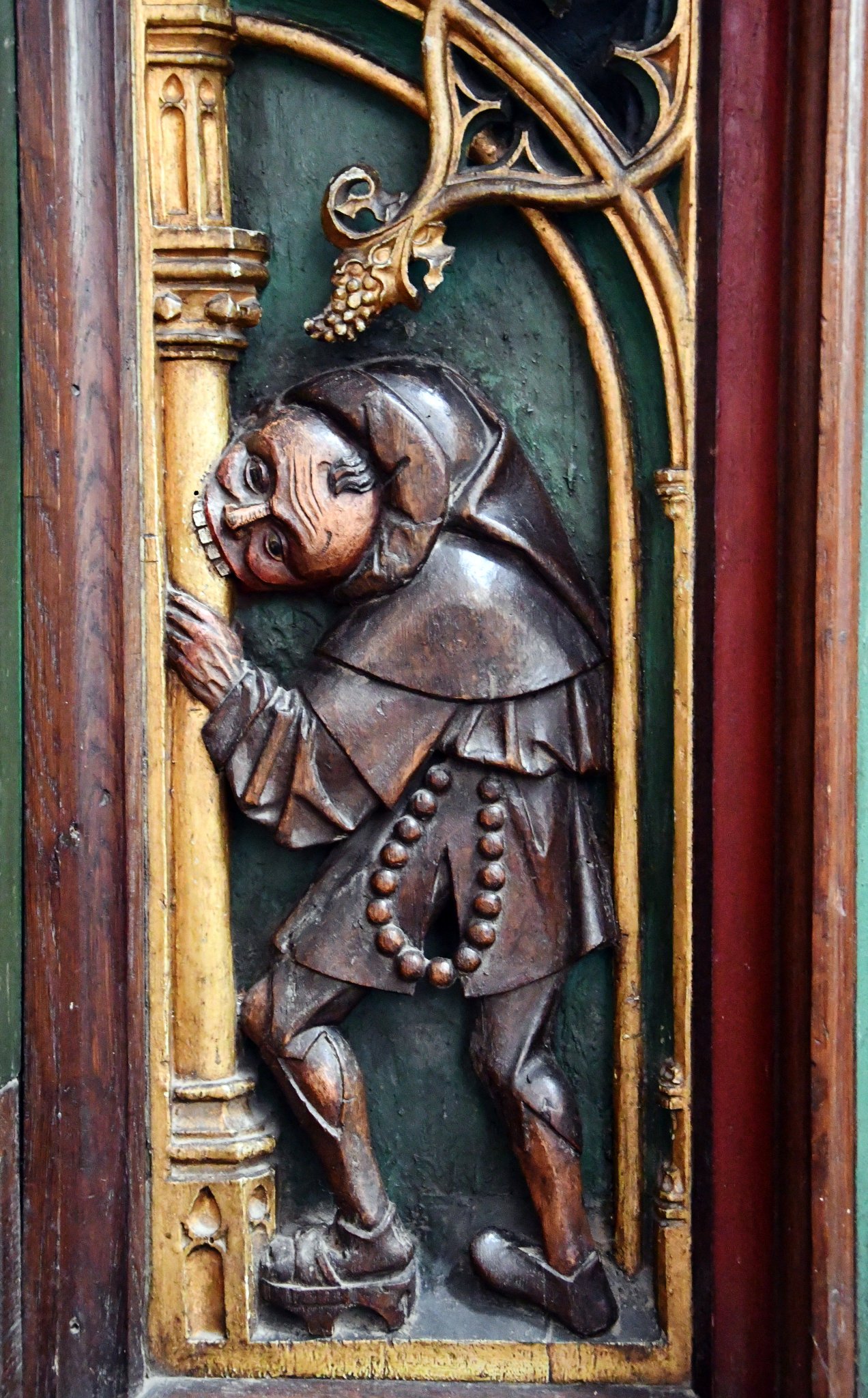
The pillar-biter theme is not very frequent in art and can only be found in a few other places. There is one on the choir stalls of the church of St Martin in Venlo (late fifteenth century), shown frontally, just as the man is about to set his teeth into the column. Another example occurs on a misericord of the stalls in the church of St Catharine in Hoogstraten (1532-46). Here, a monk is shown kneeling in front of a wooden building from which a woman looks out, hugging a column suspended in the air and either biting, licking or kissing it. He too has a rosary suspended from his belt. In this particular instance, the image is intended to bring out the hypocrisy of the clergy. The column here could well carry phallic connotations. Last but not least, a pillar-biter is shown on the various versions of Pieter Bruegel the Elder’s famous painting of proverbs (1559).
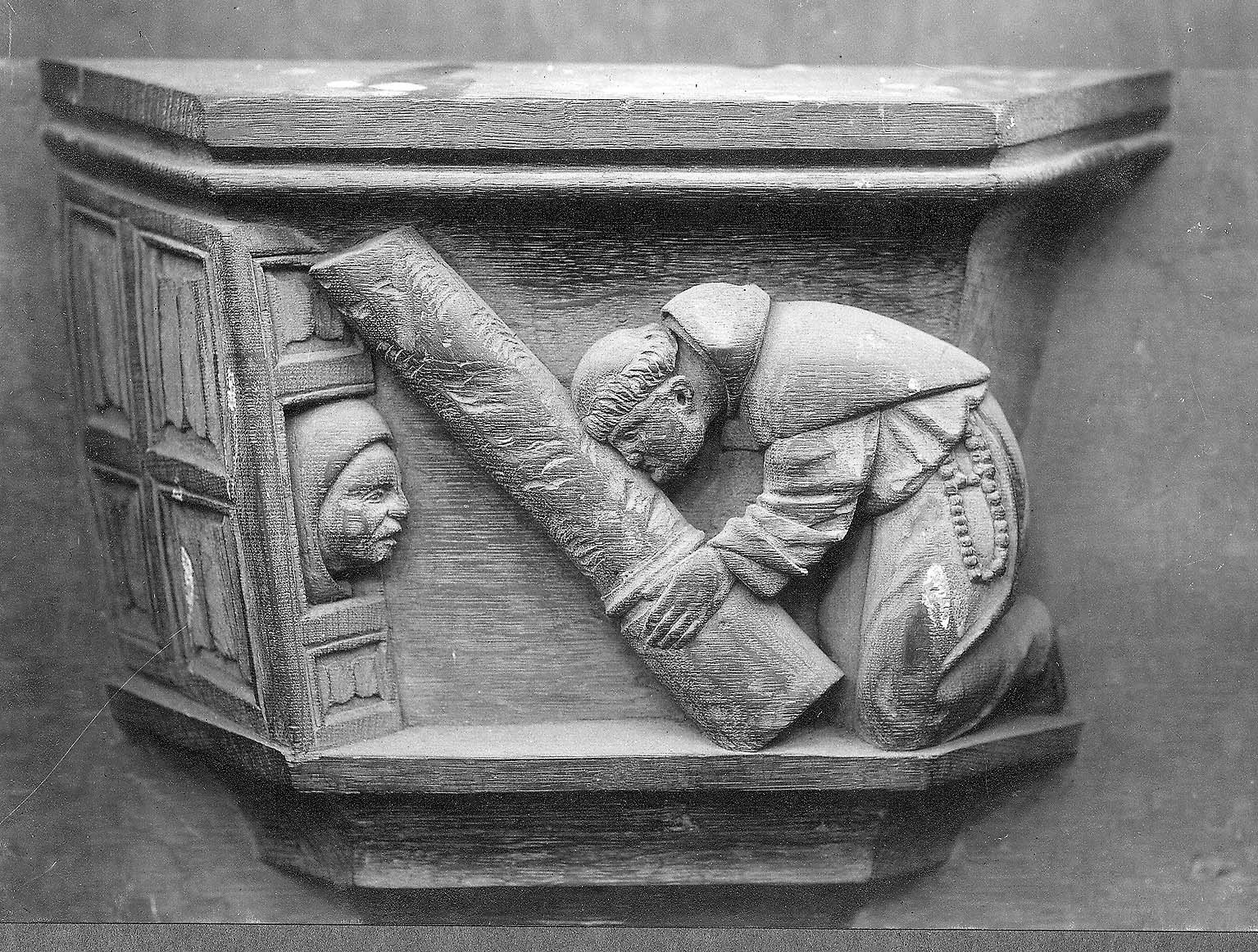
Digesting medicinal dust from the church
This having been said, in medieval times people did sometimes literally devour church parts, not in order to destroy it, but for medicinal purposes. Being a sacred building, the material of which a church was constructed was apparently thought of as beneficial when mixed into potions. With their knives, churchgoers would scrape powder from church walls, tombs or statues for medicinal use. On various church walls or on columns, one can still see the vertical grooves created by this practice. In the Netherlands, there are examples in Naarden, Edam, Geervliet, Spijkenisse, Oldenzaal, Ootmarsum, Denekamp, Delden, Enschede, Loppersum, Thorn, Susteren and Maastricht.
The grooves on the columns in the St Amalberga church in Susteren are particularly telling. Rediscovered during the restoration carried out from 1967 to 1972, it was noted that the specimens thus targeted were those nearest the high altar. It also seemed significant that it is the east sides in particular that show up the majority of the cuts and grooves. On the other hand, the church of St Plechelmus in Oldenzaal, rebuilt in 1480, has them on both sides of the southern entrance. Indeed, there is a whole battery here. In the church of St Servatius in Maastricht, such cuts and grooves are to be found on the column nearest the crypt entrance.
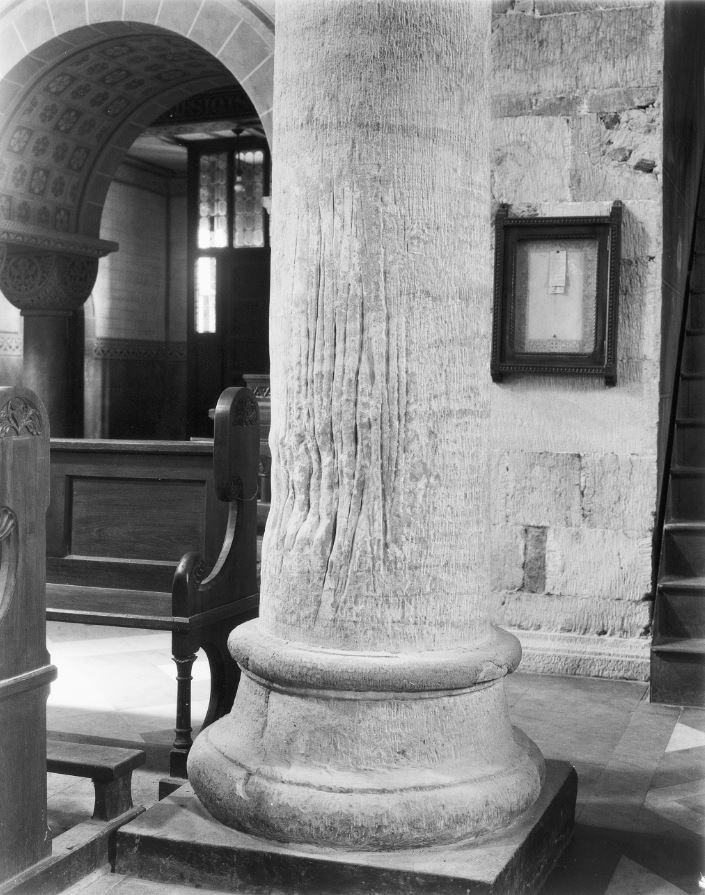
The practice was an old one, known as early as the 6th century. In his Libri de virtutibus sancti Martini episcopi (1.37), Gregory of Tours mentioned seeing a woman who had been suffering from dysentery for five months being carried to the church of Martin in Tours. She kept vigils at the church, scratched some dust from the tomb of Martin, drank it and was healed. Gregory’s brother Peter, when still a young boy, caught a fever and was cured by his family gathering dust from the tomb of St. Julian in Brioude, part of which he drank mixed in a drink and part of which he kept in a container hang about his neck (Miracles of St Julian, 23:24). Gregory himself, when at the point of death and medical treatment failing, said to the physician who was treating him: ‘“You have applied every invention of your profession; you have now tried the power of all your remedies but a thing of the world is of no advantage to one who is about to die. There is one thing left that I may do. I will show you a great remedy. Let them take the dust from the most sacred tomb of Lord [Martin] and then concoct a drink for me. If this does not work, all opportunities of escaping are lost”. Then a deacon was sent to the above-mentioned tomb of the holy patron; he brought some of the sacrosanct dust and, when it was diluted, they offered [it] to me to drink. After it was drunk, the pain soon subsided and I received health from the tomb’ (Libri de virtutibus sancti Martini episcopi 2,1). The venerable Bede went even further and declared that “many sick people had been healed by the soil of the floor on which the water, used for washing his [Saint Oswald’s] bones, had been poured out” (Bede, Ecclesiastical History, III.XI).
Cum licentia Dioecesis Brugensis
Curiously, the idea of the pillar-biter and a drink were united in 2002 in a beer with the name ‘pilaar-bijter’ that is manufactured on behalf of the bishopric of Bruges by brewery De Brabandere in Bavikhove. Its medicinal qualities come for free.
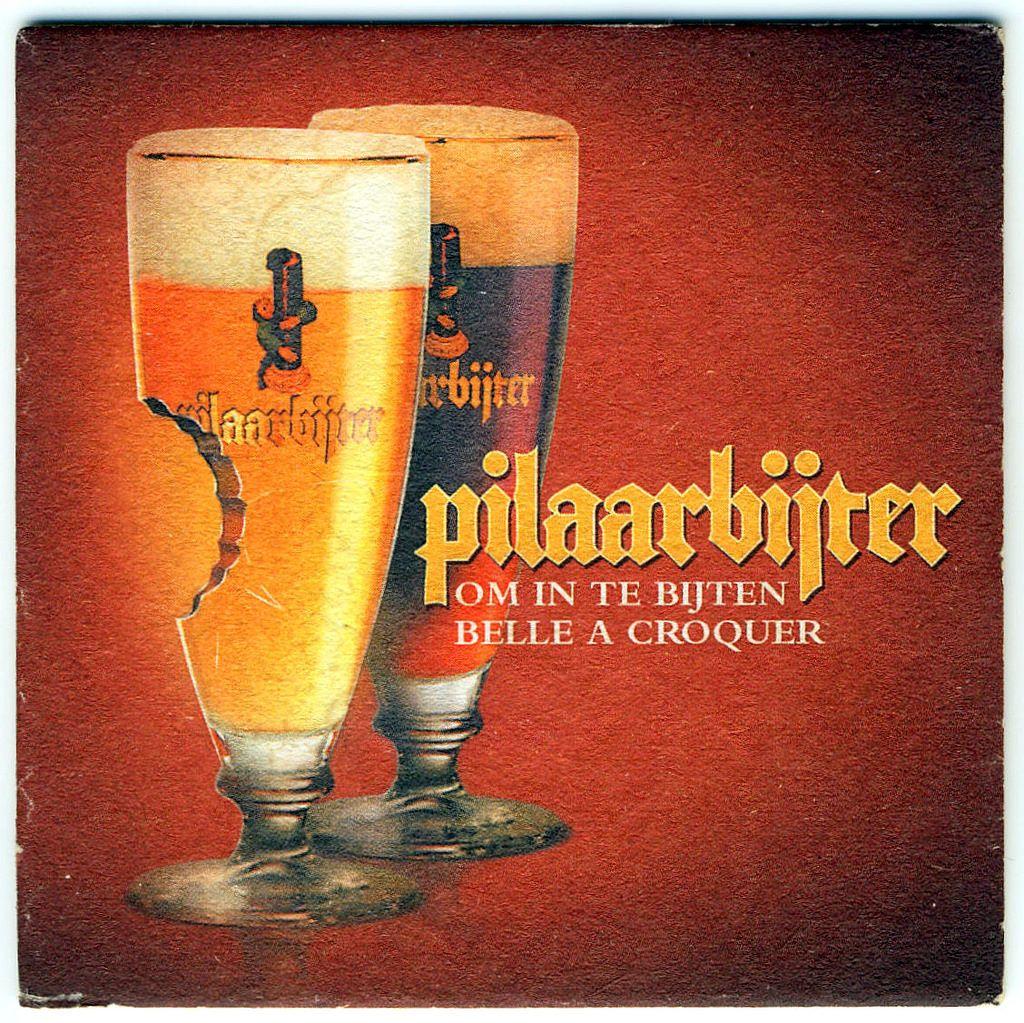
Literature
J.A.J.M. Verspaandonk, ‘Het koorhek in de Grote of St. Bavokerk’, Haerlem Jaarboek 1991, 29-47, spec. 38-39.
J.M.A. van Cauteren, ‘Heil uit steen: pestpoeder’, in: E. Koch, E. Mantingh, J. Stöver en K. van Vliet (red.), Over kaken, boordbanken en Etstoelen. Sporen van Middeleeuws Nederland, Utrecht 1995, 120-121.
© Elizabeth den Hartog and Leiden Medievalists Blog, 2019. Unauthorised use and/or duplication of this material without express and written permission from this site’s author and/or owner is strictly prohibited. Excerpts and links may be used, provided that full and clear credit is given to Elizabeth den Hartog and Leiden Medievalists Blog with appropriate and specific direction to the original content.


